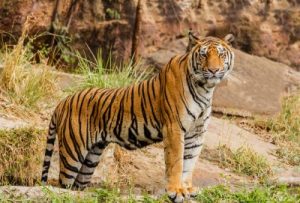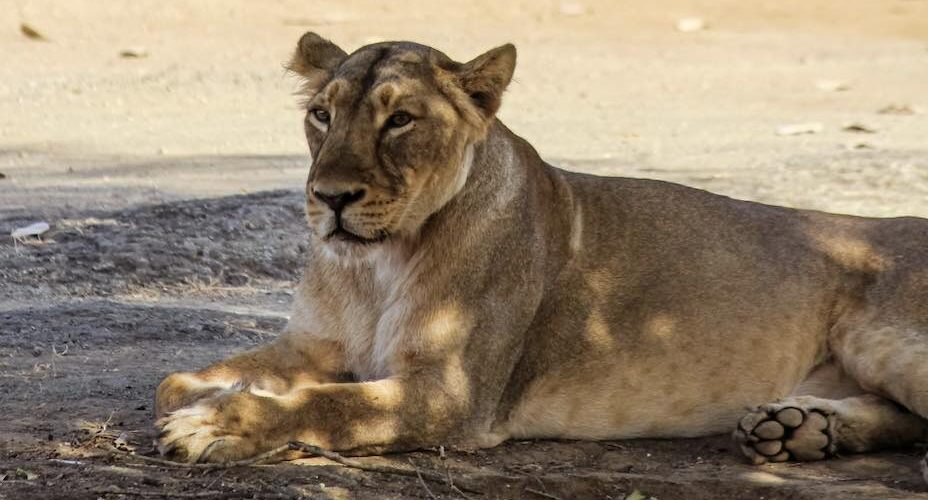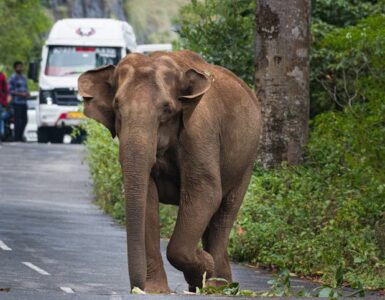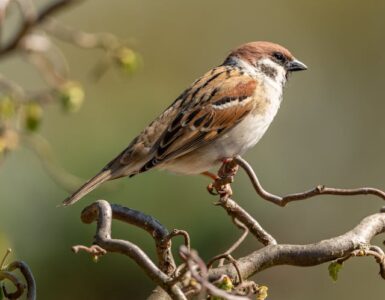Gir National Park, located in Gujarat is one of the most famous wildlife sanctuaries in India, primarily known for being the last refuge of the endangered Asiatic lion (Panthera leo persica).
The park covers an area of approximately 1,412 square kilometres and is the only place in the world where Asiatic Lions can be found in the wild.
Gir is a biodiversity hotspot with a rich variety of flora and fauna. The park is home to over 2,000 species of plants, including teak, bamboo, and various medicinal herbs. Besides lions, Gir also houses leopards, sambar deer, chital, nilgai, wild boars, birds and reptiles.
Asiatic Lion is categorized as ‘Endangered’ according to the International Union for Conservation of Nature Red List of Threatened Species upgraded from the ‘Critically Endangered’ category in 2008 due to the efforts taken for the conservation and protection of Asiatic Lions resulting in an increase in their population over the years.
Gir National Park has been highly successful in lion conservation over the years which has led to a steady increase in their population.
Recently, the conservation steps efforts received a new impetus through Project Lion which envisages landscape ecology-based conservation of the Asiatic Lion in Gujarat by integrating conservation and eco-development.
Over the years, the estimated population of Lions in the region has witnessed a continuous rise, from 411 individuals in 2010 to 523 individuals in 2015 and 674 individual Lions in 2020.
It was in August 2020, when Indian Prime Minister Narendra Modi in his Independence Day Speech for the first time announced Project Lion. Prime Minister Modi who comes from Gujarat has shared the government’s commitment to work for the long-term conservation of Asiatic lions in the country.
The financial assistance for the protection of Asiatic Lions has also increased in the last few years, from Rs 91.03 cr in 2021-22 to Rs. 129.16 cr in 2022-23 and Rs 155.53 cr in 2023-24.
Later, the Project Lion document titled ‘Lion @ 2047: Vision for Amrutkal’ was prepared by the Wildlife Institute of India for the Gujarat government.
The document proposes securing and restoring lions’ habitats to manage their growing population, scaling up livelihood generation and participation of local communities, becoming a global hub of knowledge on big cat disease diagnostics and treatment and creating inclusive biodiversity conservation through the Project Lion Initiative.
In the document it was noted to find a relocation site for the Asiatic lions within Gujarat and outside the state, considering that the species is vulnerable to extinction threats from epidemics because of low genetic diversity.
In 2023, a lion was relocated to Barda Wildlife Sanctuary, near Porbandar, about 100 km away from their present home at Gir National Park. However, experts believe the rising Lion population in India calls for an urgent development of more habitats.
Project Tiger

Project Tiger, an initiative for another big cat species, is being implemented in tiger landscapes across the country in 53 tiger reserves. This project not only protects the declining populations of tigers across the country but also elicits public support for the conservation of representative ecosystems and associated biodiversity in different biogeographic zones.
Project Tiger, launched in 1973, is regarded as one of the primary conservation initiatives that has contributed to India’s holding the highest tiger population in the world.
International Big Cat Alliance
Meanwhile, in April 2023, during an event ‘Commemorating 50 years of Project Tiger’, Indian Prime Minister Narendra Modi announced the launch of the International Big Cat Alliance (IBCA), with the aim of conservation of seven big cats – Tiger, Lion, Leopard, Snow Leopard, Cheetah, Jaguar and Puma.
IBCA supports collaboration and synergy among stakeholders, consolidating successful conservation practices to achieve a common goal of conservation of big cats at the global level.
Earlier this month, five countries – Nicaragua, Eswatini, Somalia, Liberia and India signed the Framework Agreement to formally become members of the International Big Cat Alliance.
Wrapping Up
Projects for lions, tigers and the International Big Cat Alliance envisage activities which ensure the overall conservation of the entire ecosystem inhabited by these flagship species.
These wild animals play a crucial role in maintaining biodiversity where a loss of even a single species can trigger a chain reaction that can impact the entire ecosystem.






Add comment